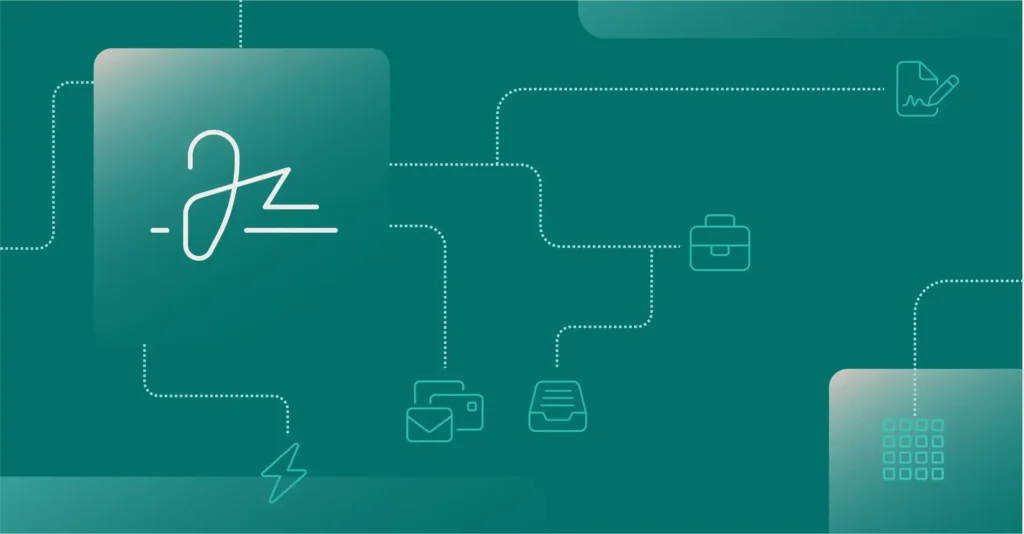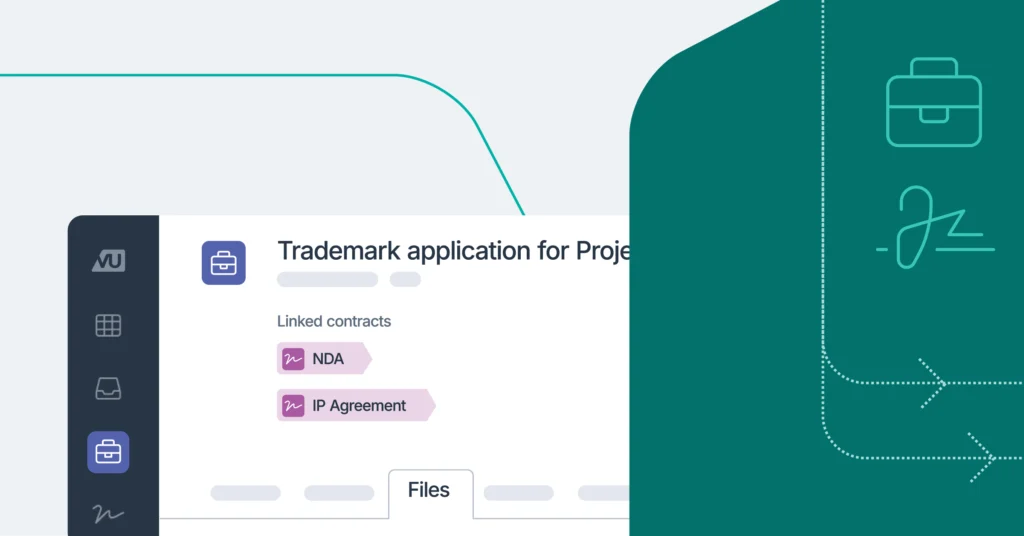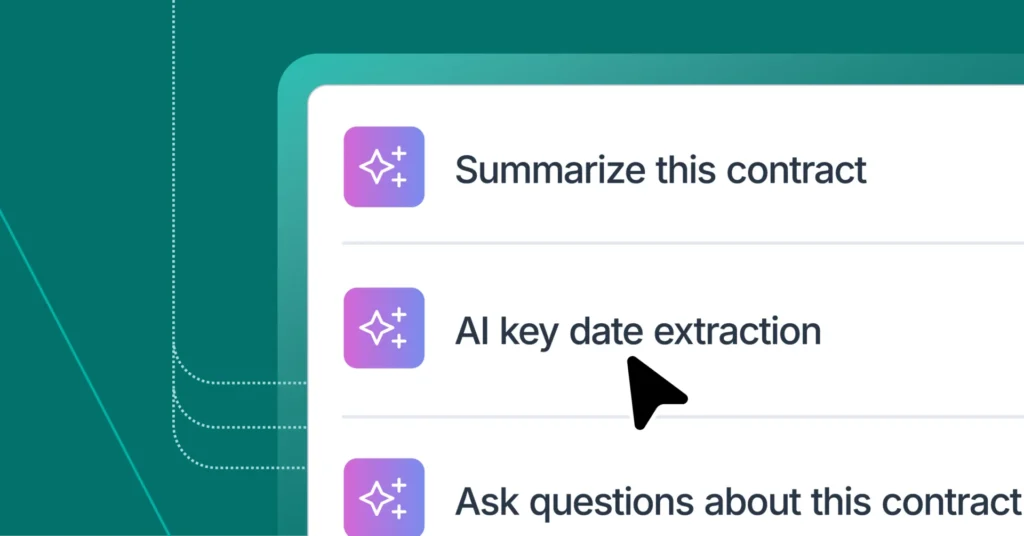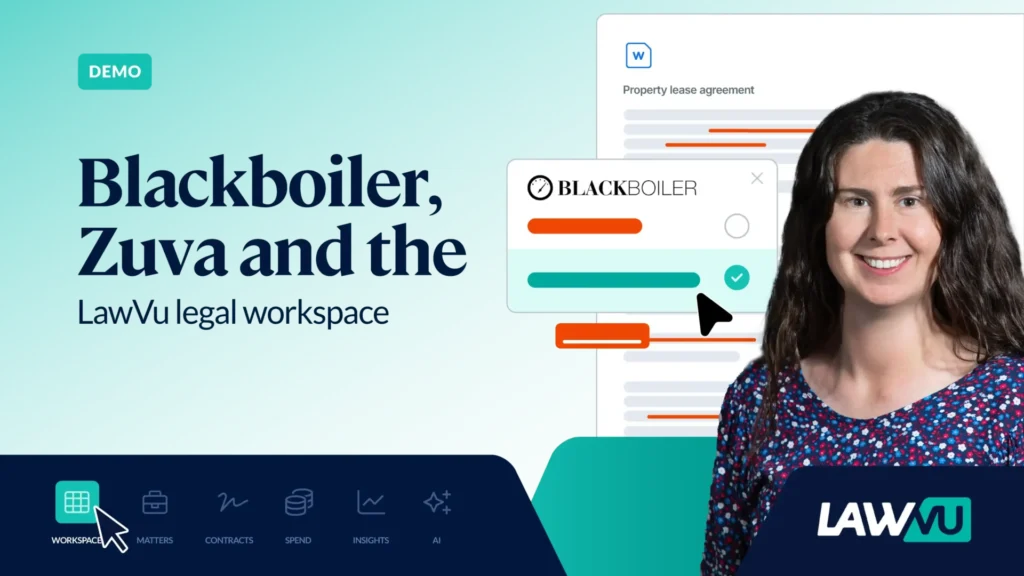The best CLM integrations for seamless contract workflows in 2025

In this article, we explore why software integrations matter in the context of contract management, before diving into the best contract lifecycle management (CLM) integrations for in-house legal teams.
Whether you’re optimizing your existing tech stack or implementing a new CLM platform, having the right CLM integrations in play is key to unlocking scalable and streamlined contract processes for both legal and the wider business.
Why CLM integrations matter to in-house legal teams
In-house legal teams are increasingly expected to deliver faster, more strategic support with limited resources, and CLM plays a pivotal role in delivering on these expectations. However, many in-house legal departments find themselves hindered by fragmented systems and manual processes – a state recently identified as ‘legal friction’.
What is legal friction?
Legal friction is the operational drag created by inefficient processes within in-house legal teams. It’s more than just a productivity issue; it’s a business risk. According to a 2025 IDC White Paper, legal teams waste up to USD $300,000 per year on time lost to low-value tasks like manual data entry, document retrieval, and chasing contract approvals. Without the right systems in place, these inefficiencies accumulate quickly, slowing down the entire business at a high cost.
For more on legal friction, click here.
When CLMs operate in silos, legal teams must manually duplicate work across systems, increasing the likelihood of errors, bottlenecks, and missed obligations. All of this contributes to the amount of legal friction experienced by both legal teams and the business partners who work with them.
That’s why integrating CLM systems with software platforms like CRM, e-signature, matter management and document management tools helps eliminate the drag of legal friction. For example, by connecting a CLM to a CRM like Salesforce, it’s possible to populate structured contract data quickly without leaving Salesforce – a move which cuts out repetitive tasks and accelerates contract creation.
Beyond speed, integrations also bring much-needed visibility and control. Legal can track contract statuses, obligations, and risks in real time, while other departments benefit from easier access and fewer handoffs. The result is a more connected, collaborative workflow that empowers legal to move from being a reactive problem-solver to a legal friction reducing strategic business partner.
Now that we know why CLM integrations matter, we’ll unpack the key categories of integrations that are available – and highlight the tools that can help in-house legal teams (and the wider business) scale CLM processes and eliminate legal friction.
Key categories of CLM integrations
To truly streamline contract workflows, in-house legal teams need their CLMs to integrate not just with their legal workflows and systems, but with the broader tech ecosystem used across the entire business. That means looking beyond core legal processes (such as matter management, intake and document management to name a few) to include tools that are also utilized by sales, finance, procurement, marketing and compliance.
That’s why the most effective CLM integrations are those that align with the way that contracts actually start and move through an organization – touching multiple departments, systems, and stakeholders.
Let’s take a look at the best CLM integrations that can help your legal team achieve this.
Matter management
For in-house legal teams, matter management and contract management are deeply interconnected. Integrating CLM with matter management systems allows legal teams to manage contracts within the context of broader legal projects and workflows. This unified approach centralizes all related documents, data, communications, and deadlines – reducing context-switching, improving visibility, and enhancing control across the legal function.
LawVu is a standout platform in this space, offering a unified legal workspace that combines matter management, contract lifecycle management, document management, knowledge management, spend management, and intake tools – all in one legal workspace. With these systems connected, legal teams can better track contracts as part of the bigger picture of legal work, and ensure nothing falls through the cracks.
“We were paying hefty fees for our former CLM… It didn’t make sense to keep paying for it when we needed other tools, including matter, spend and document management. When we moved to LawVu, we were ecstatic because it had everything in one place. Platform fatigue is a real problem, so having these various components in one place was a major win for both legal and our business stakeholders.” – Legal Operations Leader; former Ironclad customer
Document management and storage integrations
Organizations often use Microsoft SharePoint or Google Drive for document storage, so it’s vital to store key records in both legal’s system of record and the business repository. Contract management software should integrate with these Document Management Systems (DMS) to provide seamless synchronization. In this way, files and agreements added to one system can be easily mirrored in the other, complete with version history. This streamlines contract review, boosts collaboration, and ensures compliance with internal policies.
Finding contracts, documents or historical advice often requires searches across inboxes, document folders, disparate platforms and perhaps even contract management software. With a fully integrated in-house legal tool like the LawVu legal workspace, everything is in one connected system, meaning a single search across one document and knowledge base is all it takes to find what you need.
“Full-text search has truly saved hours upon hours of time we would otherwise have spent trying to track work down.” – Matt Pentz, Assistant Town Attorney, Cary, NC
Intake and business collaboration
An integrated contract and matter management tool which seamlessly connects with email and enterprise CRM and communication platforms makes it easy for the business to create legal requests, self-serve routine contracts and NDAs, and engage with the legal team from their daily tools.
For the legal team, this creates an automated intake process in which structured information is provided upfront, as well as a centralized, trackable view of all contracts and matters to make triage and task distribution easier. Legal teams looking to optimize intake should choose an integrated contract management solution that seamlessly connects with the core systems responsible for generating intake.
Email is great for communication, but it falls short when it comes to managing and storing contracts. This is where a robust legal workflow management tool with built in matter management and Microsoft Outlook and Gmail integrations can help, providing legal teams with a complete view of email-initiated contract requests alongside other matters in one secure platform.
With full visibility of tasks, ongoing work, and historic contracts, back-and-forth with internal teams is reduced, and sensitive information stays secure – ensuring compliance and continuity even during staff absences or transitions.
“Having the ability to integrate Outlook streamlined the process because it’s all there. As you send an email, you can then file your matter into the system simply by clicking a few things. It’s amazing functionality in terms of streamlining the filing process.” – Theo Kapodistrias, General Counsel – University of Tasmania
Collaboration and communication platforms
Most organizations live in enterprise conversation platforms such as Slack or Microsoft Teams, so it’s important to choose an integrated CLM which lets people raise requests for contracts or other legal matters directly from these tools. Integrations should capture relevant fields, including content and attachments from the original Slack or Teams message, and create a matter in the legal system of record. They typically provide a snippet of key information from the newly created matter back in the channel for stakeholder transparency and audit trails.
Enterprise Customer Relationship Management (CRM) tools
Salesforce is an essential CRM for sales and other customer-facing teams who regularly create contracts and other matters for legal review. An integrated CLM makes it quick and easy for the business to create, link and track matters and contracts without leaving Salesforce. Structured intake is essential for effective service delivery, so the integration should enable legal to determine their intake forms in Salesforce – automatically populating fields and options for the business stakeholder based on logic set in the legal platform.
E-signature integrations
Electronic signing software provides a seamless solution for sending, signing, managing, and storing documents in the cloud. For legal teams, it’s crucial to integrate tools like DocuSign, Adobe Acrobat Sign, and Dropbox Sign with their CLM. This lets them handle contracts with greater ease, and gives internal stakeholders and external parties a great experience without compromising security.
or example, LawVu’s seamless DocuSign integration enables legal teams to send contract documents directly from LawVu and track their status in real time. Once signed, the final file is automatically saved to the matter or contract in their legal workspace.
AI and contract automation integrations
Your legal operations strategy should consider AI for optimizing contract lifecycle management. Contract extraction, automated contract review, and configurable templates are just three of the many ways legal teams can leverage AI-powered tools with their CLM to quickly gain insights and efficiency.
Contract extraction
Data drives better business decisions, yet vital information often remains locked within contracts and manually extracting this data is time-consuming.
AI-powered contract extraction tools like Zuva AI significantly streamline contract review by automatically identifying and extracting key information from executed agreements. This reduces manual effort, accelerates review times, and helps legal teams stay on top of their obligations with greater accuracy.
When integrated with a CLM system, tools like Zuva bring advanced AI capabilities directly into legal’s existing workflows – enabling secure, efficient extraction and analysis of contract data at scale. They also expedite contract migration by importing historical contracts up to 4 times faster, helping teams quickly build a centralized source of truth and a richer, more searchable contract repository.
AI-powered contract review
AI-powered contract review has become essential for in-house legal teams who want to reduce the time that they spend on low-complexity third-party agreements like NDAs, supplier contracts, and DPAs. These tools automatically evaluate contracts against predefined playbooks and instantly generate redlined versions – dramatically shortening review cycles and improving turnaround times.
Solutions like BlackBoiler and Dioptra offer out-of-the-box and customizable playbooks, Microsoft Word integrations, and clause libraries, making them easy to implement and use. When paired with a centralized in-house legal workspace like LawVu, legal teams can seamlessly integrate automated contract review into their broader workflows, driving consistency, speed and control across the contract lifecycle.
Similarly, legal teams managing large volumes of contracts and documents need tools to quickly identify and compare changes. This is where integrations with tools like Litera Compare can help teams review even the most complex contracts and documents efficiently and accurately, ensuring no detail is missed. From minor punctuation edits to substantive legal changes, these tools let in-house lawyers easily navigate individual edits or grouped changes by type.
Contract templates
Integrating your CLM with tools like Formstack lets legal teams quickly create standard, configurable contract templates that they and their businesses can use to generate contracts that conform to the organization’s standards. These contracts are automatically created and saved in their contract management software – where they can be approved, signed and stored.
The result: time savings for the legal team and faster cycle times for the business.
“Today, about 90 percent of all of our NDA requests (which we receive from all around the company adding up to a few thousand a year) are initiated and fulfilled using the Formstack contract wizards process in LawVu, and we’ve been able to cut our end-to-end time down from weeks to just a couple of days.” – Zack Bates, Legal Operations Administrator, The Pokémon Company International
How to choose the best CLM integrations for your legal workflows

Selecting the best CLM integrations isn’t just a technical decision – it’s a strategic one. The goal is to optimize your CLM workflows, reduce friction, increase visibility, and ensure that legal becomes a seamlessly embedded part of broader business workflows. That starts with choosing a CLM solution that’s not only robust on its own, but also deeply connected to the systems your legal team – and the wider organization –relies on every day.
The strongest CLM solutions live inside an integrated legal workspace, which allows legal teams to manage contracts, matters, documents, and spend in one place without jumping between tools or duplicating work. This connected approach helps legal teams move faster, reduce risk, and collaborate more effectively across departments. When evaluating CLM integrations, keep these essentials in mind:
- Seek a comprehensive CLM solution with end-to-end contract lifecycle management, including a contract repository, automation and self-service for the business.
- Better yet, aim for a platform that lets you manage all your legal workflows and data in one place – thereby streamlining all your legal workflows, ensuring compliance, and giving you access to rich data and insights.
- Ease of use, implementation and scalability is key! Adoption matters. Your CLM should be intuitive for both legal and non-legal users, with flexible configuration, responsive support, and the ability to grow alongside your business.
- Seek out-of-the-box integrations that seamlessly integrate with the tools that the rest of business uses to centralize data, boost productivity and maximize ROI on your organization’s tech investments.
- Evaluate integrations for specialized legal workflows. For example, a CLM that effortlessly integrates with advanced AI-powered contract management for automated contract review, clause analysis, or compliance workflows gives you the flexibility to scale your operations without complexity.
- Security and data privacy: Ensure the CLM and the software integration offers rigorous security standards, including data encryption, audit trails, and compliance with key regulatory frameworks. Legal handles some of the business’s most sensitive data – make sure it stays protected!
- Look for platforms with embedded AI features that are secure and private – and in which your data stays yours and isn’t used to train public models. This gives your team the benefits of AI without compromising compliance or confidentiality.
An integrated CLM platform doesn’t just manage contracts; it becomes the backbone of your legal function. With the right CLM integrations, legal teams can eliminate repetitive manual work, improve collaboration with the business and reduce legal friction, meaning there is more time to focus on high-value, strategic initiatives.
By aligning contract workflows with both legal and business-wide enterprise systems, you enable your legal team to work smarter, not harder.
“ Lawvu’s integration of matters and contracts has created a coherent and logical workflow for our in-house legal team. Their intuitive interface makes it an easy-to-use legal front door for the business user, and it’s just as easy for legal to customize and tailor workflows to our own requirements and preferences. The addition of analytics and reporting capabilities empowered us to drive more actionable insights and speak the language of the business through data.” – Charmaine Shyu, Legal Operations Manager, Property Finder
Ready to choose the best CLM integrations for your tech stack?
The right CLM integrations can make or break your ability to deliver scalable and streamlined contract processes as well as your ability to reduce legal friction. As legal teams are increasingly expected to operate like strategic business units, ensuring your contract workflows are deeply connected to both legal and enterprise systems is no longer optional – it’s essential.
Whether you’re looking to streamline matter and document management, improve collaboration and communication across departments, or improve contract turnaround times, a unified legal workspace with powerful CLM integrations is the key to making it happen.
At LawVu, we’ve built a legal workspace designed specifically for in-house teams – one that brings together contracts, matters, documents, spend, knowledge, and more all in one place. With out-of-the-box integrations across the business and legal tech stack, LawVu helps you work smarter, faster, and more collaboratively. Explore our integrations to see how LawVu connects with the tools your team already uses.
Want to see the best CLM integrations in action? Book a demo to consult with one of our experts and discover how LawVu can tailor the right CLM integrations for your legal function – and your wider business.



